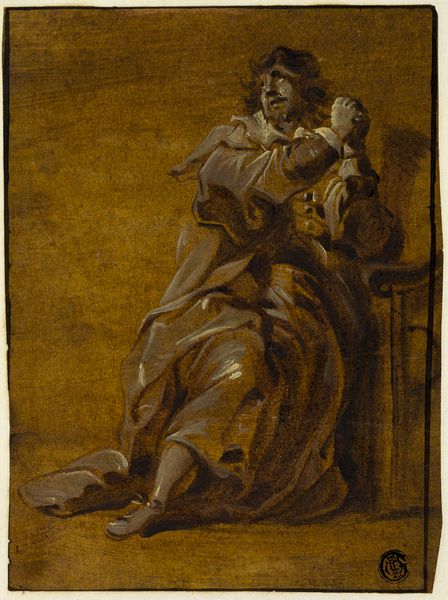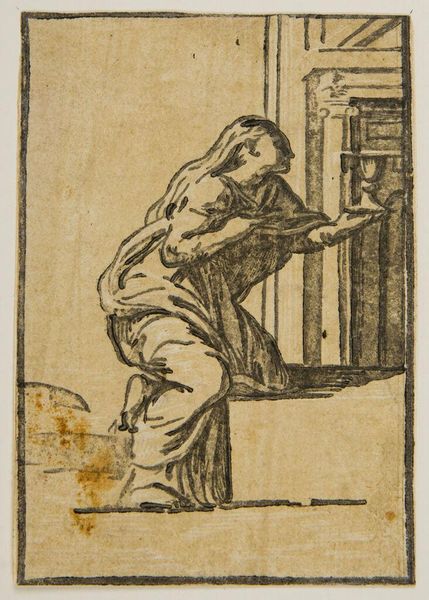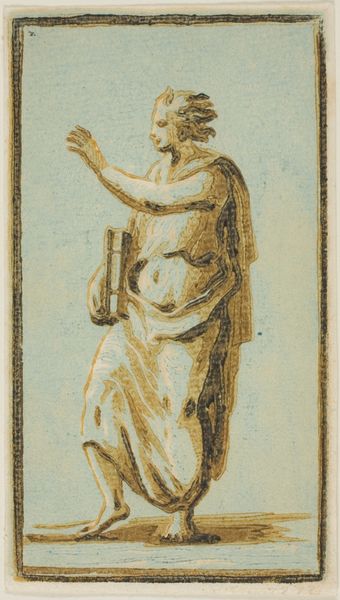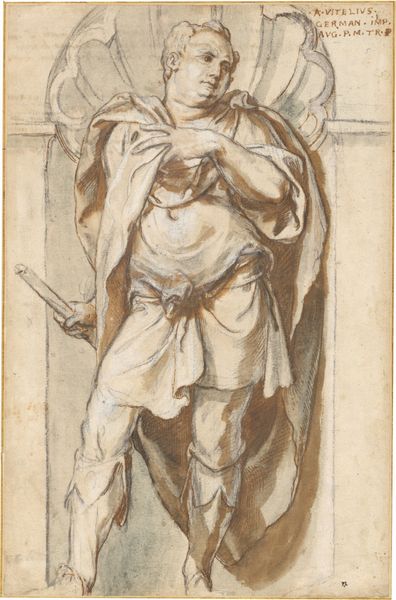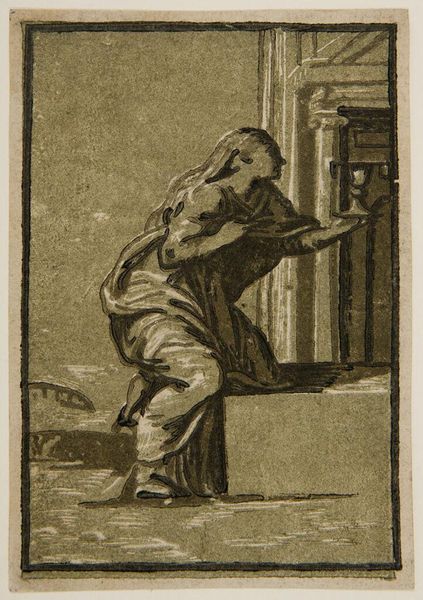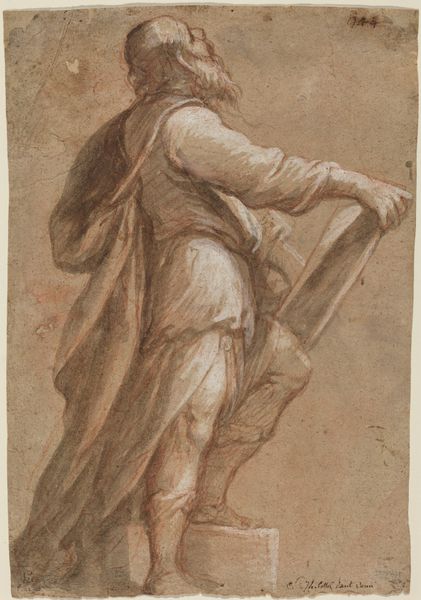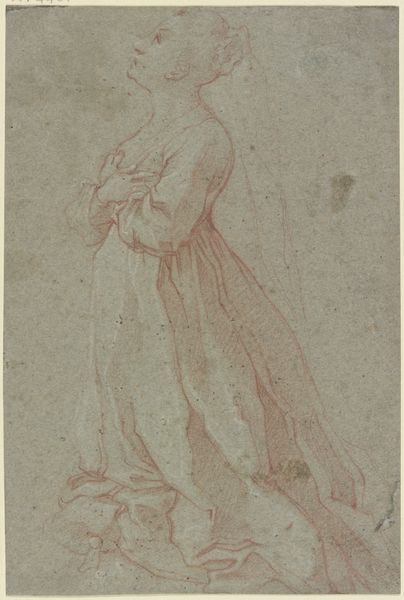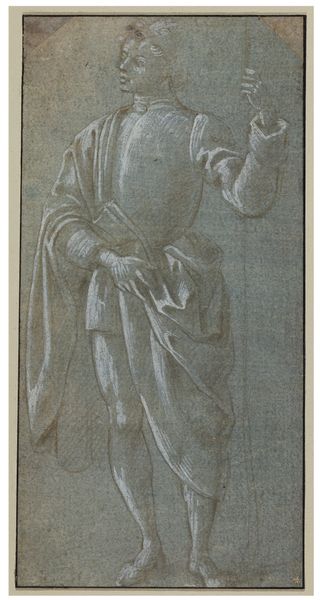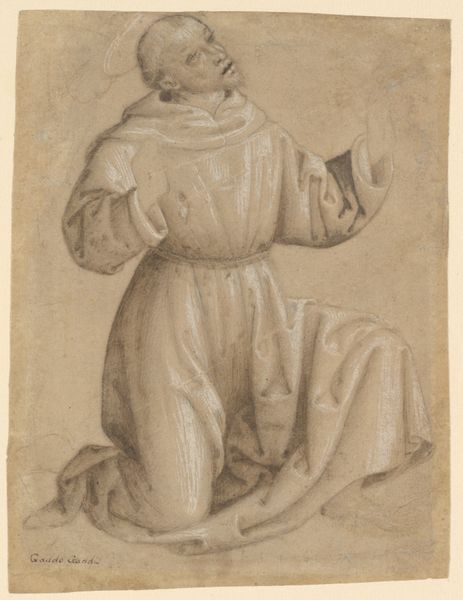
Female personification of Faith who kneels raising a chalice in her left hand, after Parmigianino 1515 - 1525
0:00
0:00
drawing, print
#
drawing
# print
#
figuration
#
history-painting
#
italian-renaissance
Dimensions: sheet: 5 1/2 x 3 3/4 in. (14 x 9.5 cm)
Copyright: Public Domain
Editor: So, here we have an anonymous print from the Italian Renaissance, likely made between 1515 and 1525, after Parmigianino's design. It depicts a female figure, kneeling and holding a chalice— a personification of Faith, perhaps? There's a contemplative, almost somber, mood to it. What strikes you about this image? Curator: Immediately, I'm interested in the reproduction itself. It raises questions about accessibility and the circulation of religious iconography during that period. Consider how prints democratized access to art previously confined to elite circles or church settings. This image of "Faith" becomes a portable, reproducible symbol. How does that impact its reception? Editor: That's a good point, the act of reproducing the artwork changes its meaning and purpose. But what about the imagery itself, what was the socio-political context around images of faith? Curator: Images of faith, like this personification, played a crucial role in shaping and reinforcing religious identity, particularly during periods of religious and political upheaval. Notice the figure's posture, kneeling in devotion; she embodies the ideal subject, reinforcing established power structures of the church, especially given the rising tide of reformation in Europe. What is interesting is how this was “after Parmigianino”; it wasn’t exactly “Parmigianino”, and it raises an important issue on authorship and distribution. Editor: It's fascinating to think about this print as both a religious object and a tool for social control and influence. The distribution channels too! Curator: Exactly. Its meaning shifts as it moves from the elite art world to the broader public sphere. Do you think a devotional object can act as propaganda? Editor: Initially, it's unsettling to view it as propaganda, but the way you've outlined how it perpetuates ideologies makes me rethink my perspective on art's purpose and influence in society. Thank you. Curator: My pleasure! Considering art as both a product and producer of culture expands our understanding of history, hopefully encouraging continuous curiosity and critical interpretation.
Comments
No comments
Be the first to comment and join the conversation on the ultimate creative platform.

